Untangling Profitability allocation for competitive advantage
Business context
Rapidly growing business, increased competition, complex distribution of products across channels and lack of transparency into trade promotions heightened client’s need to become a more data and insights-driven organization.
The client sought profitability at product and customer level to identify marketing/investment opportunities among customers and help identify growth opportunities.
The client’s objective was to minimize the amount of manual effort required to allocate costs and marketing spend across SKUs.
The client was looking to revamp current architecture, automate data management centrally and improve cost allocation processes to rationalize the portfolio and address its evolving needs.
Client
A multinational CPG manufacturer & distributor based in UAE, operating across 35 countries with sales in 100+ countries and producing multi-foods out of 30+ manufacturing units across the world.
Challenges
- Fragmented and siloed data technology landscape for its business transactions and consolidations made it difficult to understand product and customer profitability at SKU level.
- Complex inter-dependencies between 40 stakeholder groups with each having their own requirement proved a stumbling block for profitability allocation process.
- A time-consuming and manual allocation process that affected its ability to deliver accurate insights

Engagement scope and approach
Systech a long-term and trusted partner of the client was a natural choice for implementation given our experience in profitability analytics, along with their deep understanding of the client’s business process and technology landscape.
Systech facilitated the gathering of business requirements, leveraged Metadata-driven allocation process, reusable data integration accelerators in a user-friendly design, and developed a robust model for accelerated implementation. The solution executed the following:
- Access to system generated profitability at customer & SKU.
- Standardized financial KPIs across businesses.
- Eliminate/minimize manual intervention in MIS preparation.
Solution Overview
Systech focused on establishing robust invoice measures, streamlining marketing processes, addressing concerns around the allocation of overheads, and enabling visibility into true profitability.
Robust Invoice Measures for Seamless Allocation
The solutions introduced enabled the client to accurately break down invoice data at the SKU level. This was accomplished through the standardization of unit selling price across items, as well as by allotting freight for each item shipped based on invoice recorded revenue. This enabled users to appropriately ledger account selection for invoice specific promotions to capture rebates along with introduction of new measures to breakdown sales returns, sales rebates, and discounts.
Streamlined Trade and Consumer Marketing Processes Responsible for Insights
The next phase of the business’s data transformation was to enable visibility of trade and consumer marketing spends to arrive at various important marketing expenses. As part of this, Classification of TMI (“Trade Marketing Investments”), the enterprise could track customer spend across all the channels of businesses and siphon them off into two major categories. One category surrounded invoices (marketing spends done as part of invoicing), and the other addressed “Off invoice” (spends done as part of store promotions and other customer for specific TMIs). Further, the team could now access and evaluate data on Consumer location, profit center-based allocation of marketing investments (CMI), the breakdown of total “Cost of the Goods Sold” (COGS), as well as the ability to identify other miscellaneous incomes (ex: service operations and hedging income and losses as RM & PM).
Allocation of Overhead for Visibility at Granular Level
The client was missing insights around overheads based on the Cash Management Bill (CMB) of an item for COPT cost (led by the customer order processing team), as well as the SCM, Warehouse, Distribution, Channel Management, Customer Specific, Distribution, R&D, IT, specific project, and HR Administration costs and depreciations. In fact, selling overhead based on gross contribution led to them breaking them further into marketing overheads, resulting in increasing depreciation and marketing depreciation. Systech was able to circumvent the nuances of this problem through the advent of revenue and cost measures put into place: P&L flow of revenue measures such as Net Sales Revenue, Gross Contribution, Gross Margin, EBITDA, PBT & PAT. As a result, the customer was able to gain further insights into the true customer SKU level profitability, Amortization, and Interests.
Customer 360° for a sustainable growth
Systech created and implemented data changes that resulted in a long-term solution to generate deeper insights an end-to-end management data management system, as well as 360° profitability.
Business Impact
Systech was able to establish data solutions that resulted in measurable impact in the following areas:
- Manual effort reduction in analytics and insights from 15-20 days to hourly basis
- Access to approximately 40 finance heads & managers across the group to adopt a unified P&L definition.
- Entire P&L with ~100 KPIs were automated in a centralized system which gets allocated basis requirement on various measures such as sales revenue, sales volume, gross contribution, CBM, COGS with zero manual intervention.
- Marketing Spend visibility and further improvements on the spends were carried out for some of the major customers in channels across Modern trade, traditional trade, and food service.

